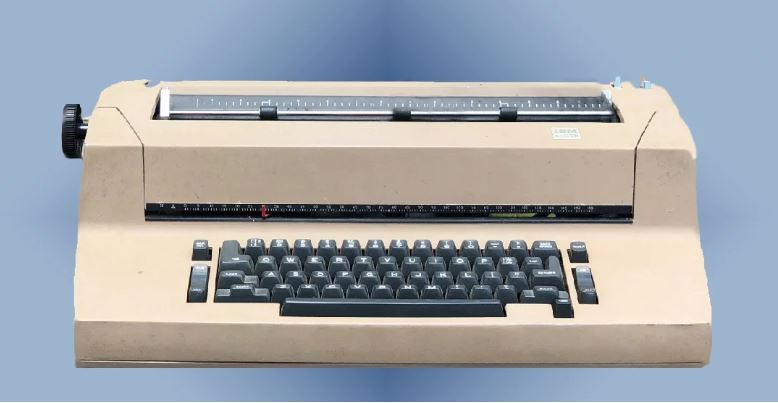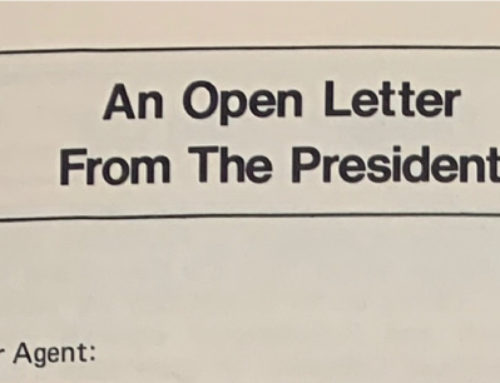This is JSA’s first typewriter, an IBM Selectric. There is a vast swath of agents today that have never used a typewriter, so allow us to explain: A typewriter was a hand-operated mechanical device that would print characters via a striking action of embossing ink onto paper. Think of a piano,…except instead of the hammer striking a string that makes a sound, it presses an inked letter onto paper to make a print. Electric typewriters – like our Selectric – meant you didn’t have to physically push down the keys with force to get a good print onto the paper, but they worked primarily the same way as the manual models. This model was an innovation because it did away with the “basket” of leggy individual type bars that would often get tangled when you were typing exceptionally fast and replaced it with a golf-ball sized type element that could be changed out for different font styles. With the advent of personal computers and laptops, typewriters are now obsolete, although the QWERTY keyboard layout of most typewriters is still used on most devices.
Back then, we would type up policies using carbons which would create copies instantly that we could then send out to agents, the insured, the company, and lien holders,…all while keeping a copy on file. But it was difficult to make corrections, so being an accurate typist was a considerable asset. With so much typing having to be done, we even hired a typist – Wanda Kerley – who would come in at 4:30 pm and work late into the night typing policies for us, often staying until midnight to get the job done.
Today, of course, we have more efficient ways to keep track of information and communicating with agents. We do practically everything paper-free with nearly instant communication via e-mail or phone. And yes, the typewriter still works,…although finding ribbons for it is another story.








